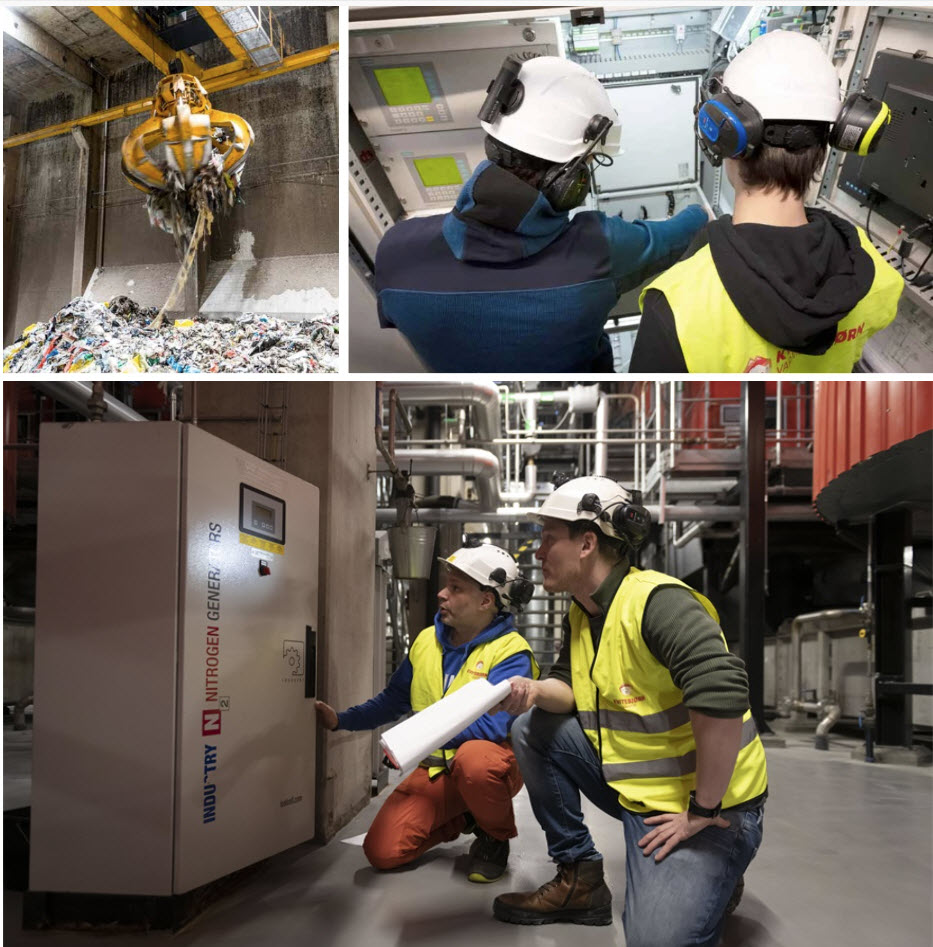
09.09.2024
CLIMIT; Kvitebjørn Varme Takes Carbon Action in an Arctic Environment
In Tromsø, the district heating system is operated by Kvitebjørn Varme AS. The company, in collaboration with Rambøll DK and Norsk Energi, is currently developing a supplier-neutral base concept for CCS at its facility.
The goal of avoiding commitment to a specific technology or supplier for capturing and storing CO2, is to reduce commercial risk by allowing multiple suppliers to compete, as the project approaches the investment decision stage. This strategy keeps the options open for the best available solution when the time comes for implementation. It also grants the organization control over the concept’s development and contributes to internal capacity building, which is crucial both during project maturation, and when the plant is handed over to operations personnel.
The Tromsø project is supported by CLIMIT with a grant of NOK 3.5 million. Charlotte Tiller is project manager.

Why Carbon Capture?
Carbon capture technology is particularly important for facilities that incinerate waste, where large amounts of CO2 would otherwise be released into the atmosphere. Kvitebjørn Varme burns 60,000 tonnes of residual waste annually, a figure that will soon increase to 110,000 tonnes when a new incineration line is completed in 2025.
Since 2022, Kvitebjørn Varme has been working on a plan to capture CO2 from flue gases generated during waste incineration. Project Ashlad aims to have a fully operational carbon capture facility by 2030.
How Did It All Begin?
– The project had already completed an idea study when I took over as project manager in 2023, says Charlotte. – I started by building an understanding of how carbon capture works and read a report from TCM, about various chemicals commonly found in flue gases that can damage the carbon capture process. I recognized many of these substances from my time working with emissions monitoring at Kvitebjørn Varme. We know that the presence of most substances which could harm carbon capture is generally low, but during operational disturbances or faults in the cleaning system, their levels can occasionally exceed what a carbon capture plant can tolerate, she continues.
Unlike most industries implementing carbon capture, flue gas from waste incineration is inherently more heterogeneous due to the varied nature of the fuel. Operational experience with carbon capture in the waste incineration sector is still limited. – There is only one waste incineration plant that has operated a carbon capture facility for several years. The heterogeneity also applies to CO2 concentration, temperature, and flue gas volume, which are critical for design. I became curious about how to design a carbon capture facility considering these variations, but found little knowledge on this in literature searches, says the project manager.
A good environmental initiative locally
– It is important for us that Ashlad not only becomes a positive climate measure globally, but also a good environmental initiative locally. I read up early on how carbon capture can affect the local environment and became aware that factors like solar radiation, local hydrology, and bioactivity can influence the surroundings’ response. Since the Arctic is typically characterized by significant seasonal variation in these factors, we decided to conduct an assessment earlier than usual in such project processes. This gives us ample time to implement the right measures for our surroundings. The facility will be designed with the environment as a guiding principle from the outset.
In Tromsø, no steam is produced from the plant, complicating energy integration at KVAS compared to the norm. However, there is year-round access to cold seawater, allowing for a more efficient cooling solution for the CO2 capture facility. Access to the sea also enables the establishment of a dedicated quay for CO2 export, which could be a significant advantage for the efficient transport of CO2 to permanent storage locations.
Internal Support
To tackle the challenges, Kvitebjørn Varme has also collaborated with other incineration plants in Norway, and engaged in dialogue with similar facilities abroad. – We are in discussions with technology suppliers to understand how they approach the issues in the project. Many assume standard methods will work, but we want to delve deeper to ensure we have all the necessary information before making significant investments, says Charlotte.
Unknown Variables
Charlotte highlights many aspects of carbon capture at waste incineration facilities that lack clear guidelines, especially regarding emissions regulations and flue gas quality over time.
– We have had to investigate whether it is sufficient to rely on average values over time, or if we need more detailed measurements to ensure that the capture process operates optimally. This has proven challenging, as it is difficult to find satisfactory answers both nationally and internationally, and it will likely be somewhat plant specific. To address the uncertainty, we must remain mindful of this as we further develop the project. This will be a central part of the strategy going forward.
International Collaboration
To tackle the challenges, Kvitebjørn Varme has also collaborated with other incineration plants in Norway, and engaged in dialogue with similar facilities abroad. – We are in discussions with technology suppliers to understand how they approach the issues in the project. Many assume standard methods will work, but we want to delve deeper to ensure we have all the necessary information before making significant investments, says Charlotte.

The Road Ahead
The project is currently in the pre-feasibility phase, which began in February this year with the allocation of CLIMIT support. In Q1 2025, the project will transition to the feasibility phase, where the goal is to select a technology. This will be followed by the planning phase, which aims to establish a comprehensive basis for an investment decision in 2027. – Our goal is to have carbon capture in operation by 2030. It is an ambitious timeline, but we are working diligently, says Charlotte.
Kvitebjørn Varme is considering collaboration with other projects, and is exploring transport solutions for delivering CO2 to various storage locations, both individual and collective.
– Locally, we aim to reduce emissions and establish a more sustainable energy solution for Tromsø, while creating new jobs in the process. So far, we have benefited greatly from sparring with others in the industry, and hope that our openness about our experiences from the feasibility study can contribute back, allowing us to continue to mature together. The project is considering the possibility of applying for additional funding to continue knowledge development, says project manager Charlotte Tiller.
Senior Advisor Ernst Petter Axelsen at Gassnova is CLIMIT’s responsible for the Kvitebjørn Varme project, and also serves as their advisor. – Establishing a carbon capture facility of this scale, with a new and exciting technological angle, is a significant investment for the company. Many factors come into play when assessing costs. Therefore, having sufficient resources and the right expertise to manage all aspects of development is crucial. Moreover, knowledge exchange with the industry is vital, and something Kvitebjørn Varme emphasizes. As a regulatory actor, this is something we particularly note, says Axelsen at Gassnova.
